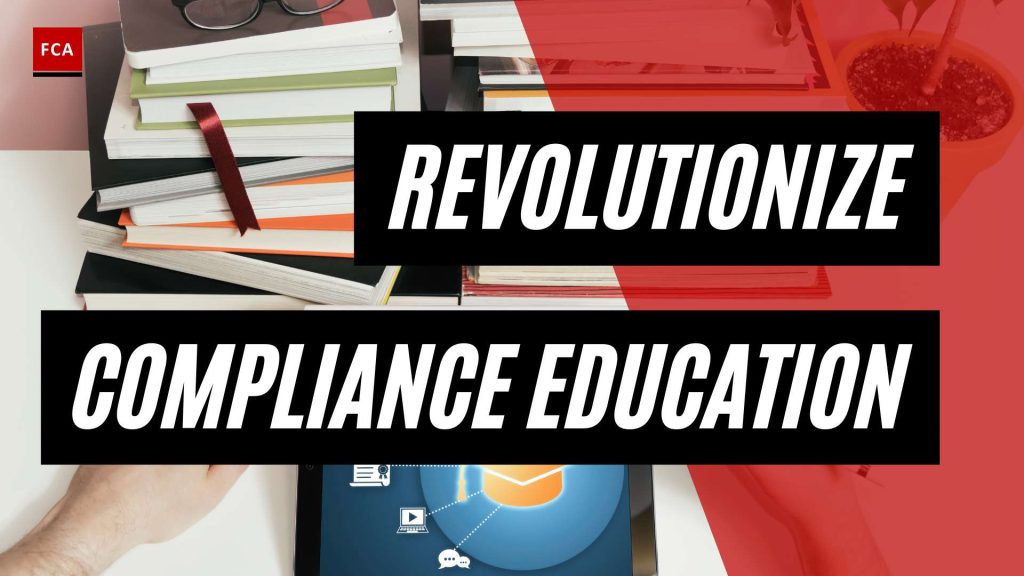The Importance of AML Training
In the fight against financial crimes, such as money laundering and terrorist financing, the importance of AML (Anti-Money Laundering) training cannot be overstated. AML training programs play a crucial role in educating employees and mitigating the risks associated with financial crimes within organizations globally. These programs help prevent illicit activities by providing comprehensive knowledge and awareness to staff members (Financial Crime Academy).
Mitigating Financial Crime Risks
Financial institutions worldwide are investing heavily in AML compliance training programs to mitigate the risks posed by financial crimes. By equipping employees with the necessary knowledge and skills, organizations can actively contribute to the prevention and detection of money laundering and terrorist financing activities. Effective AML training programs help financial institutions comply with regulations, minimize financial crime risks, protect their reputation, and avoid costly penalties (Financial Crime Academy).
Comprehensive AML training educates employees about the red flags and indicators of suspicious transactions, enabling them to recognize and report potential money laundering activities. By developing a vigilant workforce, organizations can effectively contribute to the overall prevention and detection of financial crimes.
Compliance with Regulatory Requirements
Online AML training programs must be developed and maintained by reporting entities (REs) to comply with relevant laws and regulations, such as the Proceeds of Crime (Money Laundering) and Terrorist Financing Act (PCMLTFA) and associated regulations. These training programs should cover the obligations and requirements under the PCMLTFA and be tailored to the specific roles and duties of employees, agents, or other authorized individuals (FINTRAC).
By providing AML training to employees, organizations demonstrate their commitment to fulfilling their legal obligations and actively contribute to the prevention and detection of financial crimes. Compliance with regulatory requirements not only helps safeguard the integrity of the financial system but also ensures the overall safety and stability of the economy.
To ensure the effectiveness of AML training programs, organizations must also establish and implement compliance policies and procedures. These policies and procedures should cover requirements such as client identification, reporting, record-keeping, and know-your-client obligations. The level of detail in these policies and procedures will depend on the size, structure, complexity, and degree of exposure to money laundering and terrorist financing risks of the business (FINTRAC).
By prioritizing AML training and compliance, organizations can actively contribute to the global efforts to combat financial crimes. Through comprehensive training programs and adherence to regulatory requirements, financial institutions can protect themselves and their clients from the risks associated with money laundering and terrorist financing.
Online AML Training Programs
In the realm of Anti-Money Laundering (AML) training, online programs have gained popularity for their convenience and effectiveness. These programs offer professionals working in compliance, risk management, anti-money laundering, and anti-financial crime the opportunity to enhance their knowledge and skills in a flexible and accessible manner.
Flexible Learning at Your Own Pace
One of the key advantages of online AML training programs is the flexibility they offer. Professionals can learn at their own pace, allowing them to balance their training with their work and personal commitments. Whether it’s during lunch breaks, evenings, or weekends, individuals can access the training materials and progress through the program at their convenience.
Comprehensive Coverage of AML Topics
Online AML training programs provide comprehensive coverage of various AML topics, ensuring that participants gain a well-rounded understanding of the subject matter. These programs typically cover essential concepts, such as money laundering, terrorist financing, fraud, risk management, and regulatory compliance.
Practical Skills Development
Online AML training programs not only focus on theoretical knowledge but also emphasize the development of practical skills. Participants are often presented with real-world scenarios and case studies to enhance their ability to apply AML concepts in practical situations.
For example, GitHub offers online AML training programs that allow users to learn various skills related to the GitHub platform, such as writing in markdown, creating and highlighting code blocks, working with references and aliases, and utilizing code shortcuts effectively (GitHub). These practical skills enable professionals to utilize the platform effectively for collaboration and content sharing.
By enrolling in online AML training programs, professionals can acquire essential knowledge, improve their skills, and stay up to date with the evolving landscape of AML compliance.
Key Features of Online AML Training Programs
When it comes to anti-money laundering (AML) training, online programs offer a range of key features that make them an effective and efficient choice for professionals in the compliance, risk management, and anti-financial crime fields. Let’s explore some of the key features of online AML training programs:
Interactive Learning Experience
One of the standout features of online AML training programs is the interactive learning experience they provide. These programs often incorporate engaging multimedia elements such as videos, quizzes, case studies, and simulations. By actively participating in the learning process, professionals can deepen their understanding of AML concepts and apply their knowledge to real-world scenarios.
Interactive learning experiences facilitate better knowledge retention and help professionals develop practical skills that can be directly applied in their daily work. For example, AML training videos can demonstrate real-life examples of suspicious transactions, while AML training webinars allow participants to engage with industry experts and ask questions in real-time.
Continuous Updates and Adaptability
The financial crime landscape is constantly evolving, with new techniques and regulations emerging regularly. Online AML training programs recognize this and are continuously updated to reflect the latest trends and best practices in the field. This proactive approach ensures that professionals receive the most up-to-date information and are equipped to combat emerging threats.
By staying current with the latest developments, online AML training programs help organizations mitigate risks and adapt their strategies accordingly. This adaptability ensures that professionals are well-prepared to identify and report suspicious activities effectively, protecting their operations and reputation. AML training software plays a crucial role in delivering these updates and facilitating seamless integration with existing compliance frameworks.
Tracking and Reporting Capabilities
Tracking and reporting capabilities are essential in ensuring the effectiveness of AML training programs and maintaining compliance standards. Online AML training programs offer robust tracking features that allow organizations to monitor the progress of their employees, assess their knowledge retention, and generate detailed reports on training completion.
These tracking capabilities enhance accountability and provide organizations with valuable insights into the effectiveness of their training initiatives. Compliance officers can identify areas of strength and areas that require improvement, allowing for targeted interventions to address any gaps in knowledge or understanding. AML training solutions help streamline the tracking and reporting process, providing comprehensive data and analytics to support compliance efforts.
By leveraging the interactive learning experience, continuous updates, and adaptability, as well as the tracking and reporting capabilities of online AML training programs, professionals can enhance their AML knowledge and skills. These features ensure that organizations are well-equipped to meet regulatory requirements and effectively combat financial crime.
Popular Online AML Training Programs
When it comes to online AML training programs, there are several reputable options available that cater to professionals in the field of compliance, risk management, anti-money laundering, and anti-financial crime. Here are some popular online AML training programs to consider:
GitHub AML Training Programs
GitHub, a popular platform for software development and collaboration, offers online AML training programs that allow users to learn at their own pace. These programs provide a flexible learning experience, with the ability to pause, rewind, and review the content as needed. The training programs on GitHub focus on enhancing skills in writing markdown, creating and highlighting code blocks, working with references and aliases, and utilizing code shortcuts effectively. By participating in these programs, users can improve their abilities in formatting, organizing, and presenting content effectively on the platform, contributing to a better overall user experience. For more information, you can visit the GitHub documentation.
Financial Crime Academy AML Training Programs
Financial Crime Academy provides a range of online training programs related to Anti-Money Laundering (AML) and regulatory compliance within the legal industry. These programs cover various aspects, including legal research, drafting software, evidence management, and trial readiness guidance. By participating in these programs, professionals can enhance their knowledge and skills in AML compliance, staying up to date with the latest industry practices. For more information about the online AML training programs offered by Financial Crime Academy, you can visit their website.
Compliance Considerations for AML Training Programs
When implementing online AML training programs, there are several important compliance considerations that organizations must address. These considerations ensure that the training programs meet regulatory requirements, encompass the role of compliance officers, and establish appropriate policies and procedures.
Regulatory Requirements for Online AML Training
Online AML training programs must be developed and maintained by reporting entities (REs) in accordance with regulatory requirements such as the Proceeds of Crime (Money Laundering) and Terrorist Financing Act (PCMLTFA) and associated Regulations. The training programs should cover the obligations and requirements outlined in the PCMLTFA and be tailored to the specific roles and duties of employees, agents, or other authorized individuals (FINTRAC).
To ensure compliance, organizations should design their online AML training programs to address key areas such as client identification, reporting, record-keeping, and know-your-client obligations. These programs should align with the size, structure, complexity, and degree of exposure to money laundering and terrorist financing risks specific to the business. Compliance policies and procedures for online AML training programs should provide clear guidance on these requirements (FINTRAC).
Role of Compliance Officers
Compliance officers play a critical role in the development and oversight of online AML training programs. They are responsible for ensuring that the training programs meet regulatory requirements and adequately address the organization’s specific AML risks. Compliance officers should work closely with relevant stakeholders, such as training providers and internal subject matter experts, to ensure the effectiveness and relevance of the training content.
Compliance officers should also regularly review and update the training programs to reflect changes in regulatory requirements, industry best practices, and emerging money laundering and terrorist financing risks. By actively monitoring the effectiveness of the training programs, compliance officers can identify areas for improvement and make necessary adjustments to enhance the program’s impact.
Policies and Procedures for AML Training
Effective policies and procedures are essential for the successful implementation of online AML training programs. These policies and procedures should cover various aspects of AML compliance, including training requirements and ongoing compliance training for employees, agents, or other authorized individuals.
The level of detail in these policies and procedures will depend on factors such as the size, structure, complexity, and degree of exposure to money laundering and terrorist financing risks of the organization. The policies and procedures should outline the training frequency, methods, and recipients, and provide clear guidance on topics such as ML/TF risks, reporting obligations, and procedures for obtaining information.
By establishing robust policies and procedures, organizations can ensure that their online AML training programs are comprehensive, effective, and aligned with regulatory requirements.
To explore more about AML training programs and resources, you can refer to our articles on aml training videos, aml compliance training online, aml training for employees, aml training for accountants, aml training software, aml training webinars, aml training solutions, aml training resources, and e-learning for aml training.
Assessing the Effectiveness of AML Training Programs
To ensure the effectiveness of online AML training programs, it is essential to regularly assess their impact on compliance with anti-money laundering (AML) regulations. This section explores key methods for evaluating the effectiveness of AML training programs, including the two-year effectiveness review, testing the compliance program, and identifying gaps and weaknesses.
Two-Year Effectiveness Review
Reporting entities (REs) are required to conduct a two-year effectiveness review of their compliance program, including the policies and procedures, risk assessment, and ongoing training program. The review should be conducted by someone knowledgeable of the requirements under the PCMLTFA and its associated regulations and should be documented by an internal or external auditor or by the RE itself if no auditor is available.
The two-year effectiveness review aims to assess whether the AML training program and overall compliance program are operating effectively and in accordance with regulatory requirements. It evaluates the implementation and effectiveness of policies, procedures, controls, and training. This review provides an opportunity to identify any gaps or weaknesses that may hinder the RE’s ability to detect and prevent money laundering and terrorist financing activities.
Testing the Compliance Program
As part of assessing the effectiveness of AML training programs, it is crucial to test the compliance program itself. This involves evaluating the efficacy of the policies, procedures, and controls put in place to mitigate money laundering and terrorist financing risks. Testing can be done through various methods, including sample testing, scenario-based assessments, and reviews of documentation and reporting.
Testing the compliance program enables organizations to identify any deficiencies or weaknesses in their AML controls and procedures. It allows for a comprehensive evaluation of the program’s effectiveness in preventing and detecting suspicious transactions, as well as ensuring regulatory compliance. The results of these tests help organizations refine and enhance their AML training programs to address any identified shortcomings.
Identifying Gaps and Weaknesses
A critical aspect of assessing the effectiveness of AML training programs is identifying gaps and weaknesses in the compliance program. This involves conducting a thorough analysis of the training outcomes, feedback from employees, and observations from testing and monitoring activities.
By identifying gaps and weaknesses, organizations can take targeted actions to address deficiencies in their AML training programs. This may include revising training materials, adjusting the frequency or format of training sessions, or enhancing the focus on specific AML topics. Regularly assessing and addressing gaps and weaknesses helps organizations to continually improve their AML training programs and enhance overall compliance efforts.
To ensure ongoing compliance with AML regulations, organizations should regularly review and update their AML training programs. This includes staying up to date with changes in AML laws and regulations, industry best practices, and emerging money laundering and terrorist financing trends. By continuously adapting and enhancing their AML training programs, organizations can better equip employees to identify and mitigate AML risks effectively.
In summary, assessing the effectiveness of AML training programs involves conducting a two-year effectiveness review, testing the compliance program, and identifying gaps and weaknesses. These evaluation methods help organizations gauge the efficacy of their AML training initiatives, identify areas for improvement, and maintain robust compliance with AML regulations.








